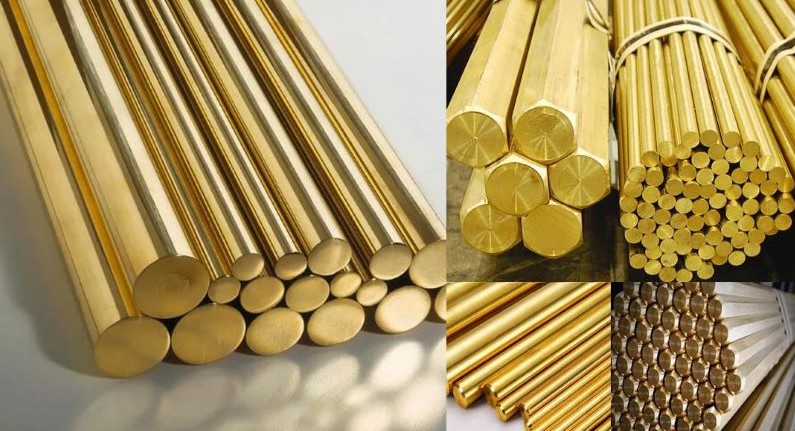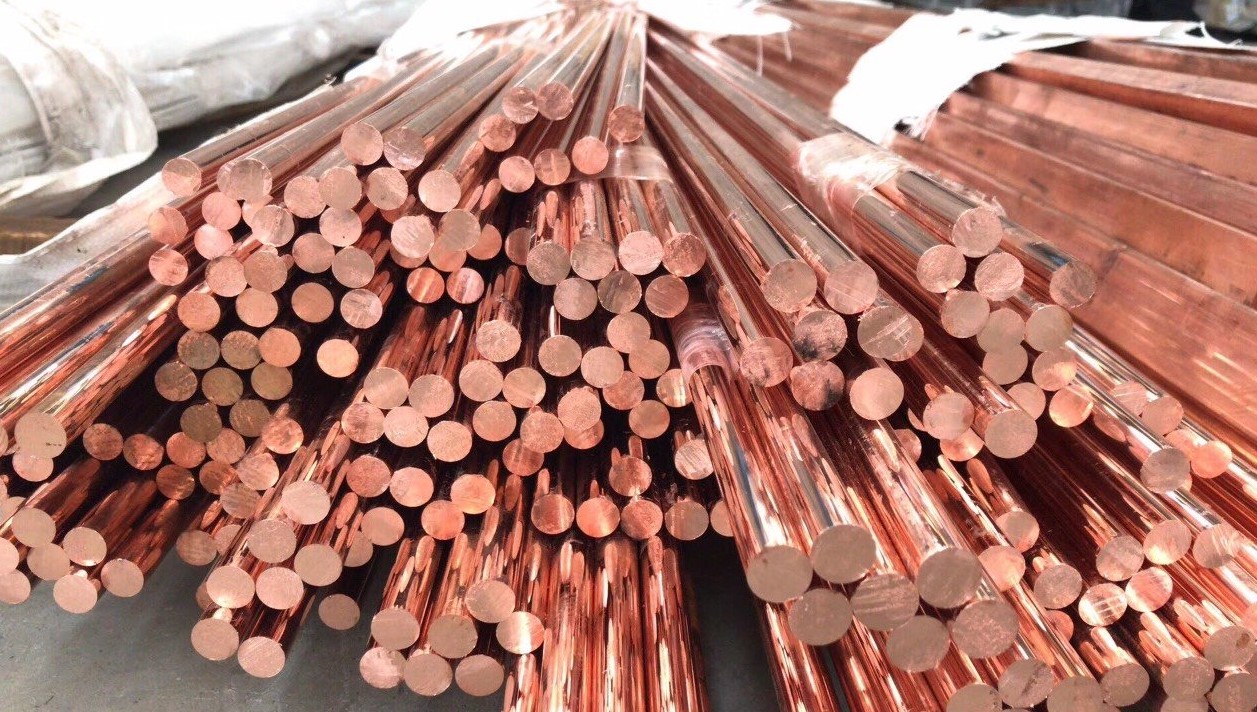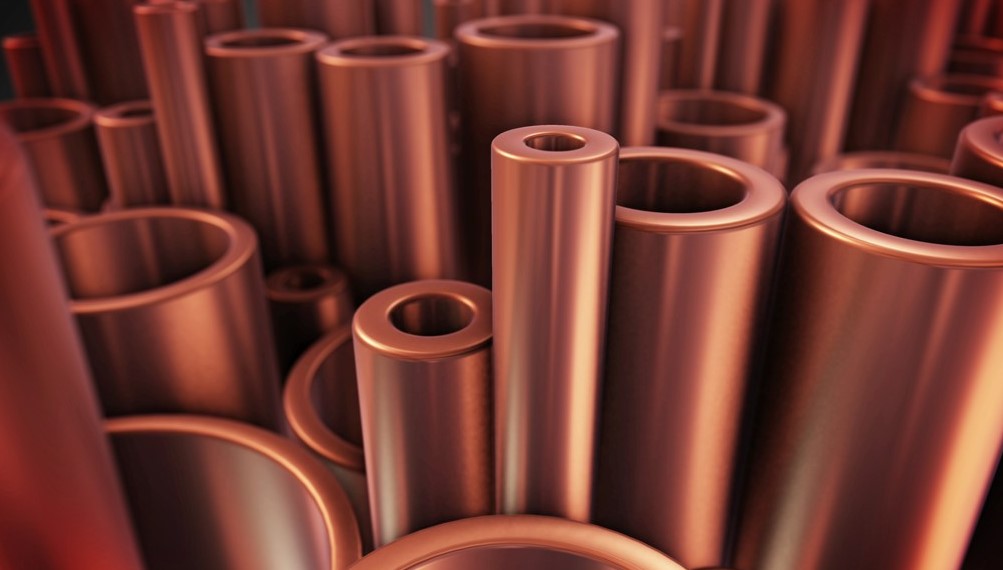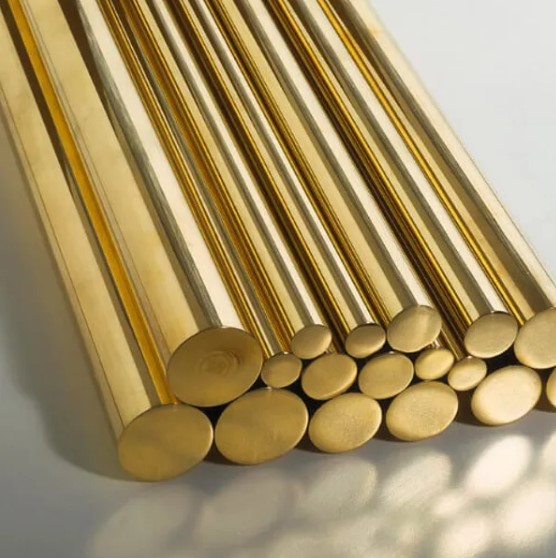Brass and pure copper (also known as red copper) are two commonly used metallic materials with a wide range of applications—from industrial to decorative. Although both are derived from copper, they differ in composition, physical properties, uses, and value. This article will help you clearly understand the differences between these two materials and choose the right one for your needs.
Brass is a significant alloy made primarily of copper (Cu) and zinc (Zn). It has a distinctive bright yellow color and is widely used across various industries. The ratio between copper and zinc can vary, resulting in different types of brass with varying hardness, ductility, and corrosion resistance. Typically, brass contains between 5–45% zinc, with copper making up the remainder.
One of the standout features of brass is its ease of machining and forming, making it an ideal choice for products like electronic components, decorative fittings, and mechanical parts. Brass also has good electrical and thermal conductivity, making it valuable in electrical and thermal applications, especially in the automotive and electronics industries. Its durability and corrosion resistance contribute to a longer product lifespan, particularly in harsh environments.

Pure copper, often referred to as red copper, is a type of copper with a purity of 99% or higher. It has a characteristic reddish-pink color and is favored for applications requiring excellent electrical and thermal conductivity. Its ductility and workability make it a key material in the production of electrical wires, electronic devices, and other industrial products.
Red copper, being nearly free of impurities, is one of the best conductors of electricity and heat, second only to silver. As a result, it is widely used in electronics and power industries to enhance transmission efficiency. Additionally, red copper is aesthetically pleasing, making it popular for artistic and decorative items. However, it is prone to oxidation when exposed to the environment, forming a brown or green patina, though this can be cleaned and polished to restore its natural shine.

Thanks to its conductivity, durability, and versatility, red copper is used in various fields:
Learn more >>> What is pure copper?
The price of pure copper varies depending on the global metals market and usage demand. Given its superior electrical and thermal conductivity, it is usually more expensive than many other metals and subject to market fluctuations. For accurate pricing, you should consult reputable metal exchanges or suppliers. Typically, the price ranges from several hundred thousand to several million VND per kilogram, depending on supply-demand dynamics and global metal prices.

To better distinguish between brass and pure copper, here are the main differences:
| Criteria | Brass | Pure Copper (Red Copper) |
|---|---|---|
| Composition | Alloy of copper and zinc | 99% or higher pure copper |
| Mechanical Properties | Harder and stronger due to zinc | Softer, more ductile, superior conductivity |
| Corrosion Resistance | Excellent, especially in marine environments | Good, but oxidizes into a greenish patina |
| Color | Bright yellow, shiny | Reddish-pink, can oxidize to brown/green |
| Price | Lower | Higher due to purity and conductivity |
Learn more >>> Copper cathode import procedures
The choice between red copper and brass depends on your intended use. If you need a material with high strength, good load-bearing capacity, and resistance to oxidation in marine environments, brass is the better option. Especially for applications that value aesthetics, brass’s golden hue adds a beautiful highlight.
On the other hand, if your usage requires high electrical and thermal conductivity and easy formability, red copper is the more suitable choice—especially in the electronics and electrical industries. Red copper is also ideal for fine arts, sculpture, and decorative interior items, offering a touch of elegance and uniqueness.

The price of pure copper varies based on market conditions, timing, and the supplier. For the most accurate and up-to-date price quotes, it’s best to contact reliable suppliers directly. Prices fluctuate according to global metal trends and industrial demand.
Stavian Industrial Metal is one of the most reputable suppliers of pure copper on the market, offering products that meet high-quality standards—ensuring reliable raw materials for industries like electronics and construction. When purchasing copper from Stavian Industrial Metal, you receive certified quality products, competitive pricing, and attentive after-sales support. With years of experience and a trusted reputation, Stavian Industrial Metal is committed to delivering pure copper products that meet all performance and quality requirements.
Address
Website: https://stavianmetal.com
Email: info@stavianmetal.com
